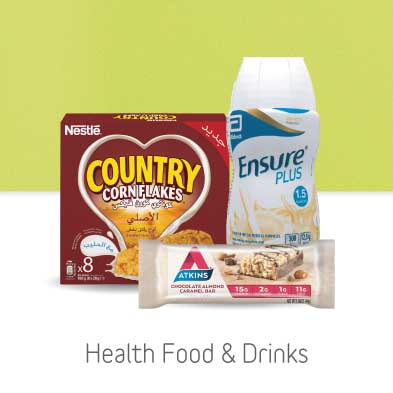The average person eats away from home about four times per week. Maintaining good blood glucose control and eating “heart healthy” is a challenge in a restaurant but it can be done! Keep in mind some of the pitfalls and you can learn some of the questions to ask when eating out. The following are some of the challenges we face when dining out:
- YOU are not doing the cooking and can’t see what or how much is being added to your meal. The fat, sodium and carbohydrate content are often unknown.
- Fat is flavorful and is often added to give foods a rich taste or texture.
- Sodium is the number one ingredient that chefs use to bring out the flavor in food and unless sodium is used in the form of salt, you may not notice that a food taste salty.
- Portions are too big. Oversized portions have become the standard in restaurants today. Even if you try to eat less you may still be eating more than you would at home.
- Meat is the entrée. Meat, specifically red meat, can be high in calories because it often contains a lot of fat. Most red meats also add extra saturated fat which can contribute to heart disease.
- You may think of a meal out as a special occasion. Years ago you may have only eaten out on birthdays or special occasions. Now, if you eat out often, you need to be more mindful of what you are ordering.
This handout provides a guide to eating out in various restaurants and a list of tips to help you ask the right questions and make healthy choices when eating out.
Healthy Tips for Dining Out
Plan Ahead
- Choose restaurants that offer healthy menu choices.
- Collect menus from your favorite restaurants to help you plan your selections ahead of time.
- Look online for restaurant nutrition information by using the restaurant’s own website or sites such as www.dietfacts.com or www.calorieking.com.
- Call the restaurant ahead of time to ask about portions and preparation.
Control Portions
- Ask the server not to bring the bread basket or take one piece and have it removed.
- Know your meal plan or carb goals, or carry a copy on a small card with you.
- Ask the server to pack up part of your meal before it’s served.
- Share an entree with your spouse or friend.
- Order from the “starters” menu (soup and salad) in place of an entrée.
- Stay away from buffets or all-you-can-eat specials if portions are a problem.
Make Requests
If you’re unsure about ingredients or how foods are prepared, ask!
- Ask if your meal can be grilled or poached instead of fried, or prepared without added fat.
- Ask that sauces, dressings and gravies be served on the side; use sparingly.
- Find out if low-calorie salad dressings, skim milk or fresh fruit options are available.
Timing
- Consider the timing of your insulin or diabetes medication when eating out.
- If you’ll be eating your meal later than usual, eat a small snack at your usual meal time to avoid a low blood glucose.
- If you take pills or fast-acting insulin, take them after you get to the restaurant in case your meal is served late.
- Talk to your diabetes educator about varying the dose and timing of your insulin if restaurant meal times are different from your usual meal times.
- Check your blood glucose more often whenever you eat meals at different times.
If you eat more than usual:
- Check blood glucose more often.
- Take a walk or do some other type of physical activity.
- Get back on track at the next meal.
- Don’t skip your next meal to compensate.
- Don’t “give up”; instead, think about what you might do differently the next time.
A Guide to Healthy Choices When Dining Out
Type of Restaurant
Food to Choose
Foods to Limit
Ordering Tips
European
Clear broth or consommé with noodles or vegetables
Cornish game hens prepared without fat; skin removed
Poached, steamed or boiled entrees
Goose or duck
Cream soups
Croissants
Pastry/pastry shells
Cream, cheese and butter sauces
Choose restaurants that serve nouvelle French or ask for sauces on the side.
Ask for foods to be sautéed in broth rather than butter.
Middle Eastern
Pita bread, stuffed grape leaves, tandoori chicken, curries made without coconut milk, rice, yogurt, chutneys, tabouli
Most lamb dishes
Breads made with or cooked in butter
Fried falafel
Ask for vegetarian versions of dishes; ask if chicken or fish can be substituted for lamb or beef.
Mexican
Steamed corn tortillas with salsa, chicken tostado, burrito without cheese, fish dishes, chicken fajitas
Tortilla chips, beef and cheese burritos, fried and foods such as refried beans
Ask for foods to be prepared without sour cream or cheese. Use guacamole sparingly.
Italian
Pasta with marinara or clam sauce, pizza with vegetable topping, veal with tomato sauce, minestrone soup
Pasta with cream sauces, pizza with meat toppings, extra cheese
Choose dishes prepared with red sauce. Ask for foods to be sautéed in wine and lemon juice instead of butter.
Asian
Steamed vegetarian dumplings, steamed rice, noodles dishes that aren’t fried, chicken or fish dishes that are steamed, stir-fried or broiled, vegetarian dishes, hot and sour soups, fortune cookies
Egg rolls and other fried appetizers, breaded or deep-fried dishes, duck, fried rice, spare ribs
Choose steamed dishes rather than fried.
Ask if dishes can be prepared with less oil.
American
Plain baked potato or sweet potato with margarine; steamed vegetables, salads, grilled or broiled poultry, fish or lean meat (loin or round choices)
Cheeseburgers, fish burgers, fried chicken, French fries, milkshakes, cream sauces and gravies
Look for lower-fat, healthier food options at fast food and chain restaurants.
Shop The Range




